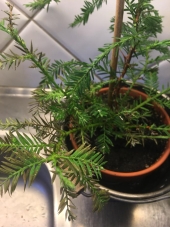Miles Flansburg wrote:
John, wouldn't this layer already have been inoculated?
It should have plenty of white rot fungi, but they may be crowding out the mycorrhizal species. It's hard to know what kind of distribution of fungal species you have just by looking at hyphae -- they aren't that easy to tell apart. That's why whenever I come across a known mycorrhizal mushroom, I save it so I can put it in the blender and make a root drench with it. That's how you
really get the roots inoculated.





